
Security
SECURITY SECTOR REFORM - PEACE-BUILDING
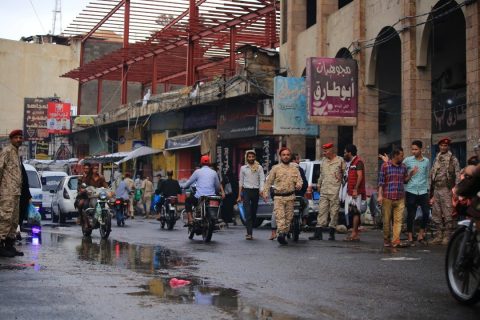
SECURITY Program
In our security program, we research formal and informal security institutions in terms of function, structure, hierarchy or communication. Our research is rooted in an 8-year security program funded by the European Union, in which security perception, women’s security and prisons were central foci.
Current SECURITY Projects
In our current project funded by Global Affairs Canada we are researching Security Committees and the security structures they are part of in Aden, al-Hodeidah and Taiz. The project is being implemented in partnership with the Center for Applied Research in Partnership with the Orient (CARPO).
Between 2017 and 2019, we implemented the project “Rebuilding Peace and Security in Yemen” funded by the European Instrument Contributing to Stability and Peace. The project outcomes are below.

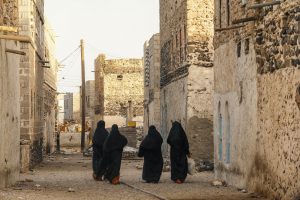
Gendered Security: Gender-based Violence and Women’s Access to State and Non-state Security Provision in al-Dhali’
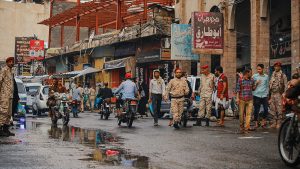
(Human) Security in a Fragmented State
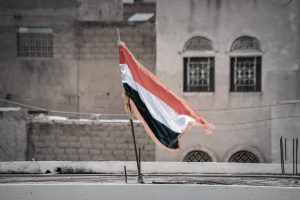
The State of the Police in Western Yemen
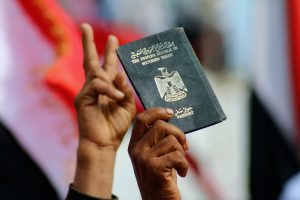
Institutional Prerequisites for the STC “Coup” in Aden and Perspectives on the Jeddah Deal
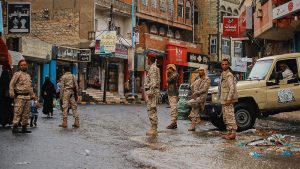
Ripple Effects from Yemen’s South Threatens Stability in Taiz
OUR APPROACH
YPC’s security programme seeks to understand security from the community’s perspective. In its projects, YPC has researched which actors are relevant in terms of security provision and which are threats to security. Through in-depth interviews and observation, YPC tries to determine if and how state and non-state security providers cooperate and how cooperation can improve.
With its special focus on gender, YPC has published on women’s security needs, and women’s role in security provision. YPC implemented an entire project focused on the improvement of the legal framework and detention conditions of women.
- Conditions and Framework for Multilayered Security Network
- Improve Conditions for Women in Security
- Inform Post-Conflict Reconstruction Efforts




Publications and Results
Concepts and theories
This paper examines peace negotiations and the participation of local women who represent either a conflict party or civil society. Their findings show that women’s participation in peace negotiations as signatories among conflict parties leads to better accord content, higher agreement implementation rates, and durable peace. They further provide brief case studies that trace the mechanism of linkages between women signatories and women civil society groups.
This paper explores the benefits of women’s participation in ceasefires by looking at their inclusion in the 2014 South Sudanese Cessation of Hostilities Agreement and the 2015 Myanmar Nationwide Ceasefire Agreement. The paper then tests several hypotheses as to how women and civil society may impact ceasefire negotiations and the resultant agreement. In particular, the authors look at the implications of inclusion for: 1) determining actors, process, and structure for subsequent comprehensive peace negotiations; 2) the text of the ceasefire agreement itself; and 3) the implementation, monitoring, and verification of the agreement.
This report enriches the debate on inclusive peace process by conducting a comparative assessment of ‘incremental inclusion’ approaches for non-signatory armed groups and civil society actors during the negotiation and implementation of four peace/ceasefire agreements. These agreements are: 1) the Algiers Accord for Peace and Reconciliation between the government of Mali and two coalitions of (pro-state and opposition) armed groups (June 2015); 2) the National Ceasefire Agreement between the government of Myanmar and eight ethnic armed organisations (October 2015); 3) the Havana Peace Accord between the government of Colombia and the FARC guerrilla group (August-November 2016); 4)the Kabul Agreement between the government of Afghanistan and the rebel group Hezb-i-Islami (September 2016). It attempts to analyze approaches of vertical inclusivity by involving civil society actors in the design of structural reforms and reconciliation mechanisms.
This paper uses Colombia as a case study to clarify how supporting civil society can contribute to building lasting peace in conflict-torn societies. The author draws from previous research to establish a general framework for what peacebuilding wants to achieve, i.e., identifying international peacebuilding objectives. It also attempts to identify activities and functions of civil society in peacebuilding to determine in what ways civil society in Colombia may contribute to the international peacebuilding objectives.
This report calls for the inclusion of women groups and civil society at large in the Yemeni peace process, arguing that their inclusion is critical to supporting any ceasefire and subsequent stabilization efforts, whereas their exclusion dramatically reduces prospects for longer-term peace. It examines previous attempts – or failures – to integrate civil society actors and women groups into the UN-led peace process and provides an outline for supporting an inclusive peace process.
This assessment highlights some of the key strengths, challenges, and opportunities in addressing both the protection needs of youth and the participation of youth in protecting civilians in Myanmar.
This Brief examines the contributions of civil society to peace requirements in Yemen, focusing on six core areas central to supporting sustainable peace: the economy, politics, culture and society, security and justice, education, and the environment. It further explores the role of CSOs during the Yemeni conflict, the challenges that face them, and possible linkages between CSOs and other actors, such as the private sector, women and youth.
This study focuses on Youth as a sub-category in the war-to-peace transitions and their relation to international organizations. More specifically, the study assesses the difficulties in conceptualizing the role of youth in peace-building processes on the one hand and the concrete efforts of international organizations to integrate them into their policies and programs on the other. It explores four guiding questions: 1) What approaches have international organizations developed regarding youth? 2) On which assumptions about youth and their role in violent conflicts are they based? 3) How do the different approaches affect program development? 4) Are they compatible?
This policy paper explores where and how young people engage in peace and mediation processes. It analyses how young people can influence such efforts using diverse and innovative approaches: from monitoring ceasefires to addressing local-level disputes, from drafting and shaping peace deals to using technology and social media to reach broader constituencies. It highlights, and provides evidence for, the positive impact of youth inclusion into peace processes.
This brief report compiles insights from peace practitioners involved in dialogue, negotiation and mediation initiatives in Colombia, Myanmar, Syria, Ukraine and Zimbabwe. It deals with peace processes initiatives on different societal levels (or “tracks”), ranging from community-based peacebuilding to high-level negotiations. In doing so, the report aims to examine the impact and effectiveness of multitrack approaches by exploring the linkages between initiatives within and across levels of society, focusing on how to create these linkages in practice and what kind of impact these linkages generate on the peace process.
This paper examines the participation of civil society in Colombia’s peace process. It looks at the different mechanisms through which civil society actors can participate in the peace process, as well as the risks that could face them while doing so. It concludes with recommendations on how to make the peace process more inclusive and more representative of the Colombian society.
This practice brief provides a summary of the benefits of using resilience as a peacebuilding strategy. It argues that although understanding the conflict’s root causes is necessary for developing an appropriate response, this fragility focus overshadows the capacities and processes that are present at the society-level and that allow members of the society to cope with the conflict. On the contrary, a resilience strategy has the potential to build peace through transformative processes that brings together people across conflict divides and facilitates conversations about contentious issues, all while fostering a greater, shared local ownership.
This article provides the first statistical evaluation of the impact of integrating civil society actors in peace agreements on the prospects for peace. The findings show that the integration of civil society does matter for the durability of peace, especially when political parties are also included. The research further shows that civil society’s inclusion is of particular importance for the overall prospects for peace in nondemocratic societies.
This report explores ways to achieve meaningful local ownership in the security sector. By focusing on 40 case studies of collaboration between security sector and civil society, this report highlights the efforts that civil society and security actors have undertaken in order to create collaborative processes and participatory mechanisms to solve problems related to human security. It further offers challenges and lessons learned to help those who are engaged in peacebuilding to advance human security.
This paper explores the connection between different types of resources and peacebuilding process. It offers a framework for developing appropriate approaches for providing funds and establishing mechanisms for responsibility and accountability at a systemic level and on the ground. It further argues that people and their various cultural traditions for building peace are primary resources that can transform conflicts toward sustainable peace. A key element in this process is the building of a peace constituency, particularly among middle-range actors in the affected population, as well as building on the cultural resources for conflict resolution that exist within the context.
This study explores conceptual frameworks on the roles and functions of civil society in countries affected by violent conflict or emerging from conflict and confronting the challenge of making peace sustainable. It is also intended to help conflict practitioners take a hard and more systematic look at the conditions under which civil society organizations, and the NGOs that often claim to represent it, can play constructive roles. This is also meant to present a more nuanced approach in sharp contrast to easy notions that any support to civil society must have positive effects, and especially that it must be good for peace. This study points out that this is often not the case and offers a number of insights and suggestions on how to engage more effectively with civil society organizations.
This article offers a conceptual framework for understanding the dynamics of Inclusion and Exclusion in Peace Negotiations. The article argues that the dynamics of inclusion and exclusion result from the interplay of these two factors: The first pertains to the practical requirements of the peace process and addresses the following question: does the participation of a given actor augment the chance of reaching a sustainable peace settlement?; the second relates to the normative dimension of peace talks: is the participation of a given actor consistent with the values of international mediators and sponsors of peace negotiations? The article further aims to shed light on a number of questions that policy-makers and mediation practitioners grapple with in their work, offering some analytical guidance for them in the process.
This article is a literature review of the current local turn in peacebuilding. After a short introduction on the origins of ‘the local’ in peacebuilding, it gives an overview of current research and policy debates on the issue along two different lines. First, it emphasises the local in peacebuilding as a measure to increase peacebuilding effectiveness, as explored in the literature on the benefits of decentralisation and local governments for peace, as well as in the debates on local capacity and ownership as essential parts of peacebuilding policy. Second, it focuses on the local in peacebuilding as a means of emancipation and inclusion of local agency, expressed partly through the emphasis on voices from below and partly within the critical approaches to how the local has been interpreted in peacebuilding so far, arguing for a peacebuilding that is essentially local.
This article examines how peacebuilding theory has influenced the shift from the international to the ‘local’ in the practice of international peacebuilding and analyses the consequences for local communities, international peacebuilding practice and critical peacebuilding research. The results demonstrate that transformative peacebuilding theories, in particular John Paul Lederach’s work, have enormously influenced the policy discourse and practice of supporting the ‘local’. Revisiting 20 years of this theory – practice encounter, this article concludes that peacebuilding practitioners have overwhelmingly recognised the importance of Lederach’s shift towards local actors. However, this has failed to result in the desired peacebuilding outcomes. This article identifies three main reasons: (1) particular understandings of the ‘local’ by the ‘international’; (2) narrow international support strategies, ignoring the broader international, regional and local peacebuilding arena, and existing power relations; and (3) the mantra status of Lederach’s middle – out approach as an almost unquestioned theory of change in civil society peacebuilding that invites reflections on theory – practice encounters and responsible peacebuilding scholarship.
This paper argues that the community-based approach adopted in Somaliland has been most productive than the traditional mechanisms adopted by the International Community in Somalia, given the ability of the ‘community’ to bypass two fundamental dilemmas that affect the top-down methodology: the ownership and the legitimacy dilemma. The empirical part of this paper introduces first the failures of the international intervention in Somalia and afterwards it describes the Somaliland alternative route to reconciliation, focusing on three aspects: the resort to traditional methods of conflict management; the gradual and preparatory nature of this peace process; the codification of traditional peacebuilding into a process of institution-building.
The overall objective of this article is to evaluate the effectiveness of integrated post-conflict management strategies in the achievement of sustainable peace in Kenya. Existing strategies include government-led local peace committee initiatives, security personnel and CSOs led activities. Holistic, multi-actor and participative programs have to some extent enhanced stability. These initiatives target different groups mainly the conflict victims, women and children, conflict perpetrators and the youth. The inclusiveness, though seemingly weak has enhanced improved opportunities for different groups in terms of age, gender and ethnicity and elimination of various forms of marginalization.
This report mapped the evolving NGO landscape in Yemen to (i) identify the key development NGOs, including NGOs working on service delivery, participation, decentralization and institution building, NGO networks, women and youth organizations in urban and rural areas of five governorates and at national level; and (ii) identify the sectoral and thematic focus of these NGOs, as well as their size, influence and effectiveness. It further assesses the institutional capacities of these development NGOs.
This study analyzes how Yemeni civil society actors fare amid the ongoing war. It offers an empirical analysis of CS organizations in Yemen showing that their potential for peacebuilding is severely restrained not only by the security situation but also by political capture, corruption, and problems associated with foreign support. The study further shows that not all types of organizations are equally affected by political capture. Rather, it argues that grassroots and new activist organizations deserve more academic and policy attention as ways out of the Yemeni quagmire are sought.
This article provides a conceptual framework for assessing the success of failure of ceasefire arrangements. It suggests that ceasefire success/failure should be assessed based on two criteria: 1) the immediate objective of the ceasefire, which is mainly concerned with the cessation of hostilities; 2) the underlying purpose of the ceasefire (i.e., delivery of humanitarian aid, achieving military gains, supporting the broader peace process … etc.) The article then applies this conceptual framework on ceasefire success during the North-South Sudan peace process.
This article analyses the Hodeidah ceasefire agreement in Yemen, which was a main part of the UN-mediated Stockholm Agreement in 2018. The author provides a descriptive analysis of the challenges that UNMHA monitors have faced in Yemen, focuses on four key factors: the agreement quality, changes in the operational environment, the monitoring mission’s relation to the mediator, and conflict parties’ commitment to the ceasefire. The article finds that monitors’ ability to carry out their mandate was hampered by the quality of the agreement and conflict parties’ perception of bias. Moreover, it finds that the Houthis, operating from a position of relative strength prevented monitors from carrying out their mandate.
This research brief explores the involvement of Yemeni civil society in security sector reform, including the larger peace process. It identifies the different functions and challenges facing civil society in Yemen during the conflict. It further examines the relationship between INGOs and Yemeni civil society, arguing that the success of peacebuilding process in Yemeni rests on its inclusivity, which contributes to its legitimacy in the eyes of the Yemeni public.
- © Copyright 2012 - 2024
- All Rights Reserved
- Yemen Policy Center
- Impressum - Legal Notice
- Privacy Policy
